
Fatigue is a dangerous thing in the car world. I’m not talking about falling asleep at the wheel — I’m talking about a material failure mode that one can’t plan for. It’s something that can happen to even the most meticulous car owner, and it happens suddenly, unpredictably, and often catastrophically. It’s what happened to my Valiant, and it contributed to a crash.
This past Friday was a shitshow, to put it bluntly. I headed down to my go-to Woodward Avenue burger haunt, Hunter House, with my go-to friend, Brandon, so we could catch up on each other’s lives. You know: “How’s your girlfriend?,” “How’s your fleet of cars?,” “How’s your serious company job?,” “How’s your fake blogging job?” — that kind of thing.
We snagged our artery-cloggers and headed out onto the fabled Michigan Highway-1 to eat in a less crowded roadside lot.
The Shitshow
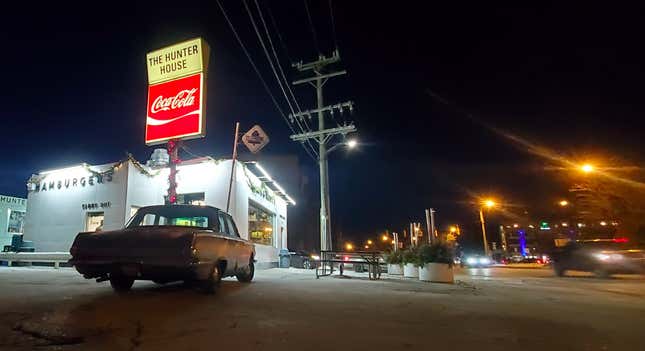
Pulling out of Hunter House in my unkillable Slant Six-equipped 1965 Plymouth Valiant, I reached a light, clutched in, and slapped the column-mounted shifter into neutral. “Hmm. The clutch pedal has a weirdly short throw to it now,” I told Brandon.
“What?” he responded, “Maybe the hydraulics need to be bled?”
I replied that the Valiant had a mechanical clutch; you push the pedal, and it just moves some rods to push in the clutch fork.
“Oh. Well, how is that possible?” he — a Willys owner quite familiar with mechanical clutch linkages — asked. “Like, why would clutch travel change?” We were confused.
I pressed the clutch in again, and it fell all the way to the floor and refused to return. The vehicle would no longer go into gear. “Oh shit. My clutch is out!” I exclaimed. The light turned green. “Oh crap, I can’t shift,” I blurted. My right foot was on the brake, my left was on the clutch, and I tried putting the three-speed into gear again, but all I heard was grinding. It was no use.
Cars rocketed past Brandon and me in the center lane of the wide highway, and then a Lincoln MKZ pulled up beside us, its front driver’s side fender mangled.
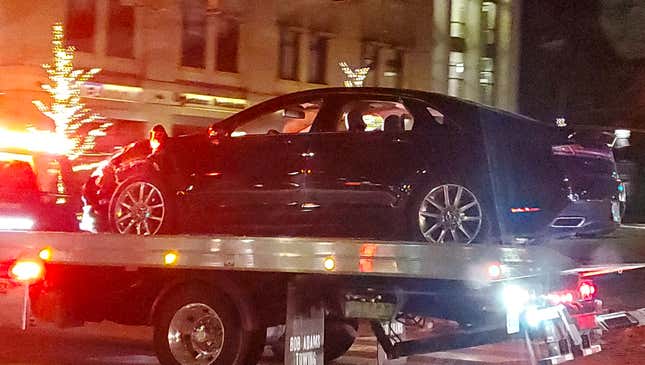
Traffic behind and beside us began to slow despite the light ahead being green. After a few moments of confusion, it became clear to Brandon and me that the Lincoln had just been involved in a crash with a Chevy HHR. Presumably the Chevrolet HHR driver had stopped behind us (or, more likely, a few cars behind us, since we hadn’t heard the impact) noticing that our vehicle was disabled; the MKZ driver apparently wasn’t paying attention and just bashed into the rear of the HHR.
The HHR, with its severe rear suspension damage, had definitely been totaled:

The police arrived to handle the situation, setting up tows for the two broken cars, and giving the drivers rides home. I approached one of the officers and let him know that my vehicle had been the one broken down. “No worries,” he told me. “It’s on them to pay attention to vehicles ahead. You’re good.”

By this time, Brandon and I had pushed the Valiant off the road and into a parking lot. We’d assumed the clutch pressure plate had gone out; I wondered if this had been related to the light clutch release bearing noises I’d been hearing for a few months. Brandon gave me a ride home, and I left the car in a Birmingham parking lot (where, incidentally, I later received a parking ticket).
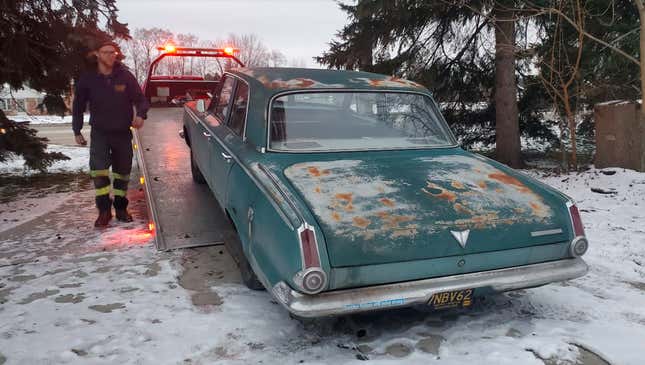
The next day, AAA towed the car to my house, and I assessed the damage.
The Failure
In the daylight, the cause of the breakdown became obvious. This wasn’t a bad clutch pressure plate, and it had nothing to do with my throwout bearing. My vehicle’s “Z-bar,” or clutch release bellcrank, had failed in what looked like fatigue. The repetitive stresses in that 56 year-old rod had, over tens of thousands of clutch applications, yielded crack propagation that had finally caused part failure:
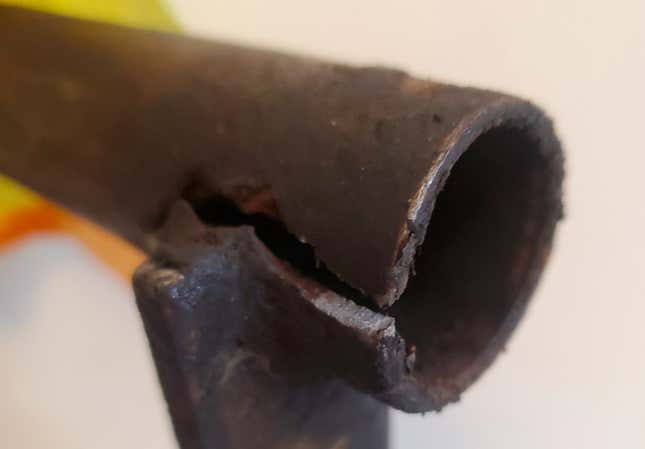
If you look at the crack closely, you’ll see a granular silver section that almost looks cast. This, I assume, is the “catastrophic rupture” or “final failure” point, a typical feature of a part that has failed in fatigue. Generally, you can tell that a part has fatigued if the crack is made up of beach marks (which represent where the part saw gradual crack propagation — you can’t really see it here) and a granular silver bit (which represents where the final instantaneous failure took place).
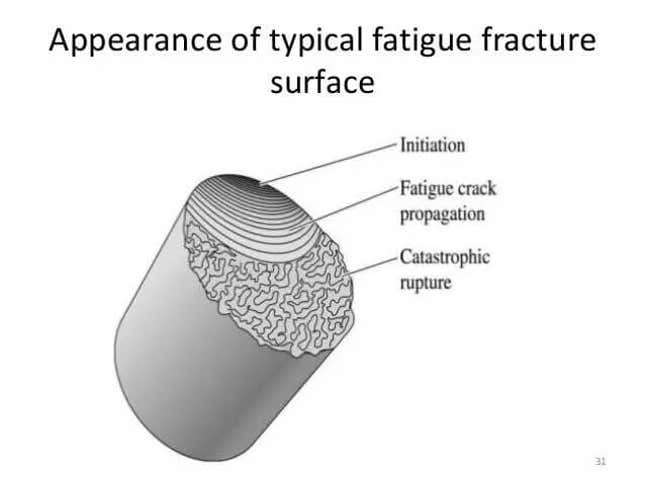
It appears that the crack on my part had been propagating for quite some time, with the “initiation site” likely being the welded joint you see above.
I reached out to NASCAR engine developer ECR Engines; the outfit’s chief metallurgist Jim Suth provided me with a bit of input based on the few photos I sent his way. From Suth:
Based on what I can tell, it appears the bar failed in the heat affected zone of the weld which likely has reduced mechanical properties.
The fracture surface ...to the left of my red line [below] is clearly oxidized red, telling me it was cracked for a while in that location before it ultimately failed. The fresh silver colored fracture is the final break and all that was holding on for a little while!
When asked whether this was a fatigue failure, he responded with: “It likely was fatigue out of that weakened area, but couldn’t tell for sure until I set eyes on it.”
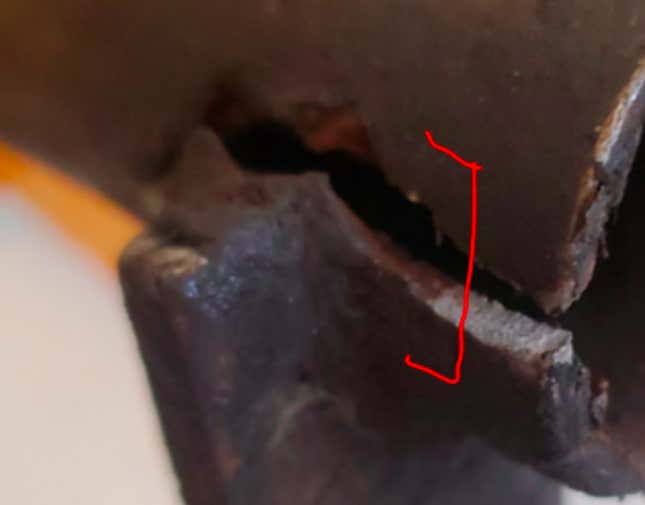
Removing the clutch z-bar wasn’t a difficult job. I just had to heat up two big 13/16-inch steel bolts, and then break them loose from the Valiant’s aluminum bell housing. Then I undid a clip or two, and boom, the rod was out.
The Repair
Instead of welding this part up myself, I decided to send it to my friend Dan, who had welded up my 1993 Jeep Grand Cherokee’s door (that was another fascinating metal failure that had begun at a poor welded joint). I had cleaned my Z-bar as well as I could, but Dan chose to sandblast it to get the remaining grime off. This gives us a really good look at the failure:
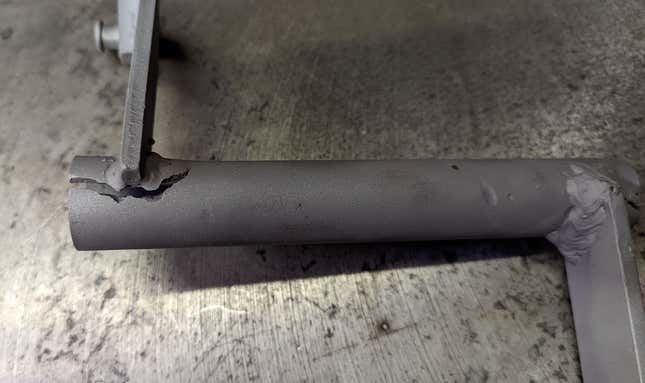
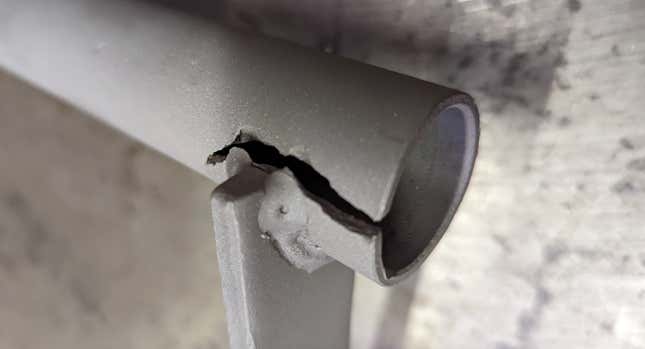
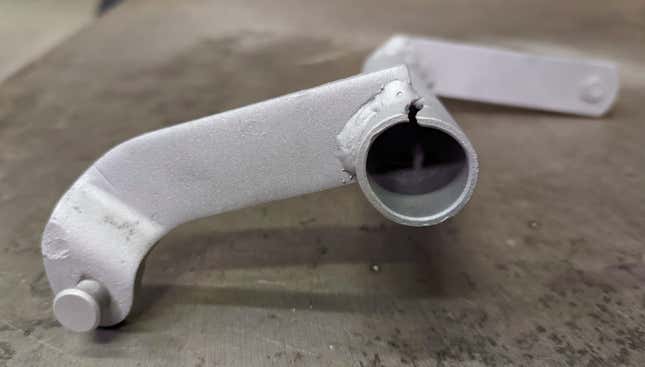
Dan then heated up the tube to soften it a bit, and clamped it together with vice grips:
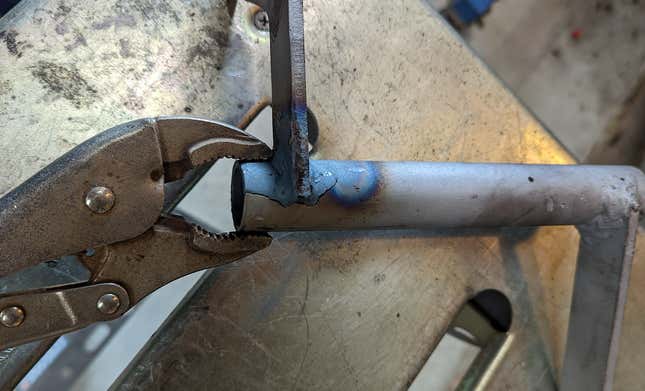
Then he broke out the welder and stitched the part up:
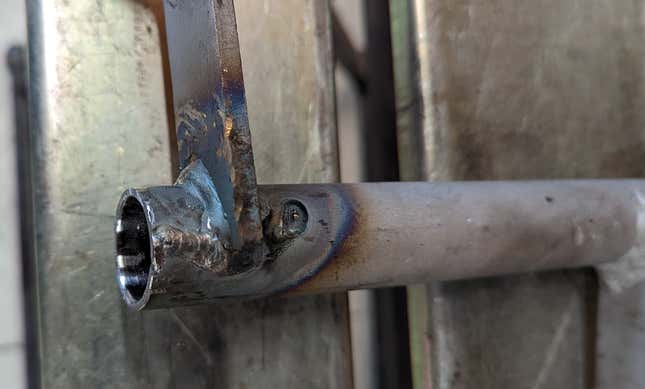
I’ll pick the Z-bar up from Dan later today, and install it this afternoon in 20F weather. Snow may be coming in the next week, and I need to have my winter beater ready so I don’t have to rust out any of my beloved rust-free Jeeps. Saving those machines from dastardly Fe2O3 is worth 20 minutes of freezing my arse off.
Fatigue Is A Danger That Exists With All Old Cars
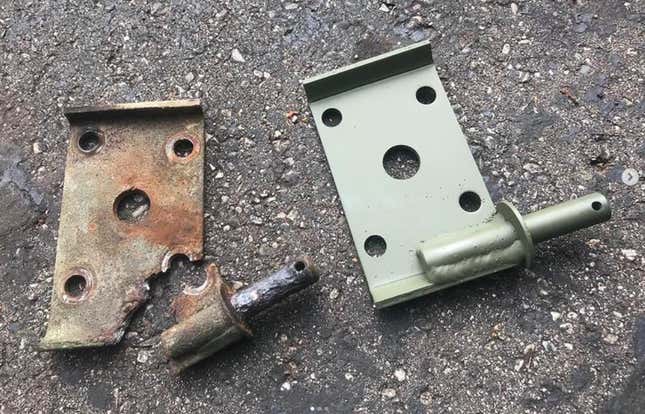
Obviously, a knee-jerk reaction from some will be “Keep your junky cars off the road,” but that shouldn’t really be the takeaway here. This Valiant had recently passed New York inspection, and I myself had inspected the vehicle and found it to be in excellent condition. But some things you cannot inspect.
The thing about old, higher-mileage cars is that, no matter how meticulously you assess their condition, you cannot anticipate fatigue. Even if you looked at every stressed joint with a magnifying glass, the reality is that fatigue is often totally invisible until the very moment that it’s not.
It’s possible that maybe in this instance, if I had been looking for this failure, I could have seen the crack before total failure occurred, but that Z-bar is so close to the firewall that it’s just not something anyone would have seen coming.
This isn’t the first time I’ve dealt with the issue of cyclical loading causing instantaneous material failure. A few years ago, while driving a 1948 Willys CJ-2A across the country, a timing gear failed catastrophically in the middle of the night in the middle of nowhere, Kansas. Timing gears generally last forever, but in the car world, 70 years is “forever.” So this part that nobody would ever have expected to give out did just that, instantly and unpredictably.
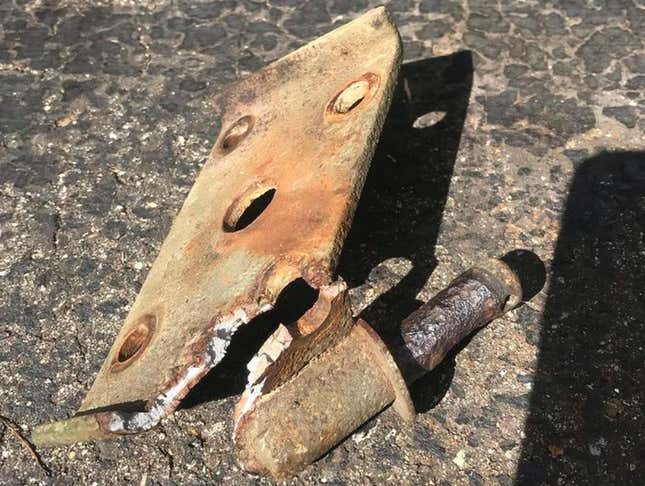
My friend with whom I was in the Valiant on Friday, Brandon, had also experienced fatigue failure of his own. While walking up to his World War II Jeep, he noticed a shock dangling down below; the cause ended up being a broken lower shock mount that had failed after 70 years (see photos above). Once again, this was totally unpredictable, because it likely was a result of fatigue.
It Could Have Been Worse, It Could Have Been Better
Had it not been the HHR that got rear-ended, and instead the Valiant, Brandon and I would likely be in the hospital right now with whiplash injuries or worse. Old cars, with their lack of head restraints and their gas tanks mounted after of their rear axles, are the last things you want to get rear-ended in. I consider Brandon and myself lucky in that regard. I’m also grateful that the Lincoln and Chevy HHR drivers came out unscathed.
If I could do the whole thing over again, I’d have shut the Valiant off immediately upon noticing that I couldn’t get into gear. With the engine stopped, my transmission’s input and output shafts would no longer have been spinning at different rates, so I would have been able to shift into first. Then I’d have just cranked the car while in gear, let the starter drive the car forward a bit before the engine fired up, and then driven at around 15 mph off the main highway. But I didn’t think quickly enough, and the result was a destroyed Chevy HHR and a bruised up Lincoln MKZ.
But hey, at least it gave us a chance to discuss fatigue failure a bit.